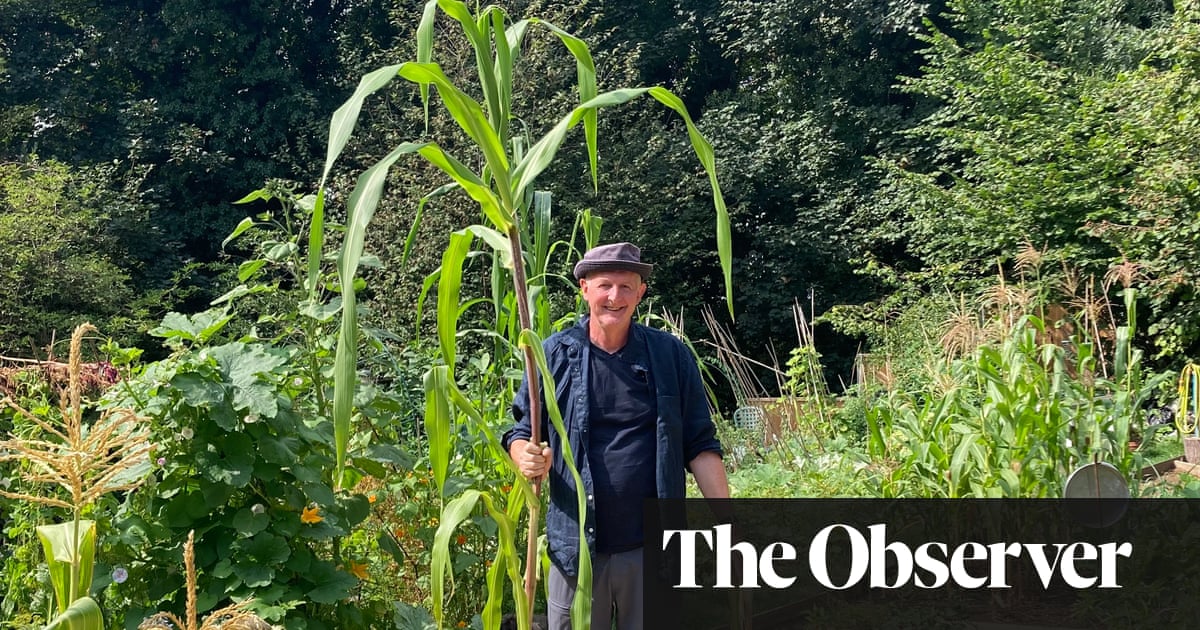
ll seasons have their flair, but for gardeners and nature-lovers, May is surely the most exciting. With spring charging into summer, and risky frosts petering out, everything is popping off at once: late tulips, early perennials and floriferous trees all climb green and greedy towards an abundance of light. Hedgerow hawthorns are as blossom-strong as the garden lilacs, laburnums and wisterias – you can almost feel the grass growing and buds breaking.
While early potatoes, peas and salad leaves are readying for harvest, there are yet more vegetables and herbs to be sown, containers to empty and replant, and next year’s biennials to consider. It’s time to take stock of spring successes and defeats; divide and adjust clumps of bulbs; prune back early-flowering shrubs and note the gaps for next year. Most importantly, make time to enjoy these verdant days: it doesn’t get much better than this.
Bring out your houseplants
Houseplants kept our spirits up during the long months of winter; they’ll be longing for fresh air and a little sunshine, just as much as we were. During warmer days, acclimatise plants outdoors where they can benefit from invigorating light levels and cleansing rain. Now is also a good time to refresh and replenish: cut away brown, crispy leaves, and replace old compost with new, taking the opportunity to scrub pots with soapy water.
Empty spring containers and plant out bulbs
Spring containers (window boxes and terrace planters) will soon be ready for replanting. With bulbs such as narcissi, muscari and tulips finishing flowering, dig them up and transfer to appropriate areas of the garden, or give them to friends. I prefer to empty pots fully, rather than plant by plant, in order to add a new layer of container compost for summer annuals and perennials such as calendula, cosmos, argyranthemum, canna and agastache.
Strengthen herbaceous perennials
By now, many vigorous garden perennials (aconitum, hylotelephium, border phlox) have filled out in beds and planters; a mulch of rotted wood-chip or leaf mould, spread around their base, will help retain moisture during dry periods.
Added at this stage, a low, supportive framework of large branching twigs (hazel or birch, rather than bamboo and string) will disappear from view as plants develop. And although this year’s Chelsea flower show has moved to autumn, a “Chelsea chop” (snipping or pinching out the growing tips of perennials like catmint, artemisia and globe thistle) will encourage a more compact shape.
Prune early-flowering shrubs
Late May is a good time to tackle shrubs that have already flowered – skimmia, forsythia, osmanthus, viburnum tinus, etc (check the RHS’s pruning group 8 if unsure). Any substantial dead wood can be removed first, using loppers, followed by branches that are either in the way or hindering the plant’s overall structure. Avoid over-pruning slow growers like camellias and daphnes, however, as cuts will remain visible for a long while. Formal evergreen hedges of box and yew can be clipped at this time, too.
Do a second sowing of veg
It might feel as if the mammoth seed-sowing push of spring is out of the way, but a repeat sowing of vegetables and herbs will greatly extend the cropping window. Beetroots, broccoli, broad beans and parsley can be sown indoors to get moving quickly, while carrots, peas, salad leaves, coriander and pak choi can be sown directly outdoors into well-cultivated, sunlit soil, and watered regularly.
Sow biennials
Now is also the time to order and sow biennial flower seeds. These will put on leafy growth this summer, and flower next year. Foxgloves, hollyhocks, honesty (Lunaria annua) and sweet rocket (Hesperis matronalis), all in shades of pink, magenta and white, can be sown in seed trays now and planted out into desired spots in the autumn to overwinter.
Take softwood cuttings
This is a great way to bulk up your stock of shrubs and tender perennials. The season’s new shoots of plants like rosemary, lavender, artemisia, buddleia and cistus are full of vigour now and should root easily: snip non-flowering stems of roughly 10cm from the tip, remove leaves from the lower half, and pinch out the tip. Plant three to a 9cm pot of compost mixed with sand; water well, cover with a plastic bag and place in a warm, well-lit spot under cover. Ventilate often, and transplant in autumn.
Give plants an organic seaweed feed
During this period, a seaweed feed every other week gives actively growing plants a boost of key nutrients, promoting healthy growth and improving yields. Organic, liquid-solution options are easy to find, and can be diluted and watered directly on to plants or applied as a foliar spray. Vigorous, leafy plants like cannas, dahlias, strawberries and courgettes will love you for it.
Weed the bad, leave the good
The seeds of undesired plants will be germinating now at the same rate as (and often in competition with) those you’re sowing. Before reaching for the hoe, however, it pays to know your cow parsley from your ground elder. When not undermining the paving, many “weeds” offer attractive flowers that provide declining pollinators with crucial forage and shelter.
Collect seed
No single gardening activity beats raising free plants from collected seed: full smugification. Have a pack of envelopes ready for the papery seed heads of early flowerers like foxgloves, forget-me-nots and poppies, which are ripe for gathering when browned and rattling at the touch. Allow a share of seed to drop on the ground, too, giving a little back, before storing envelopes somewhere cool and dry for later sowing.












